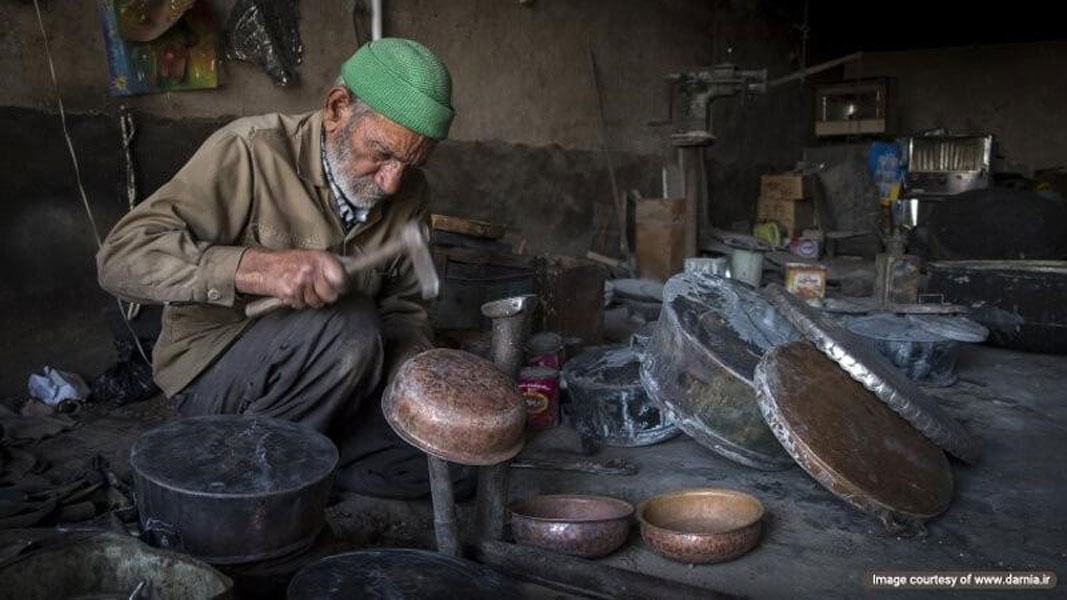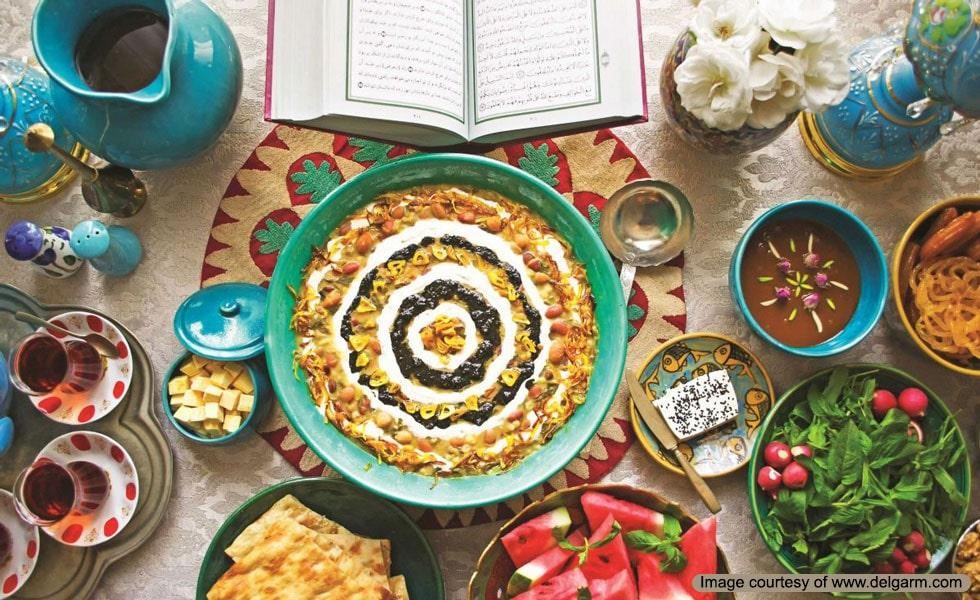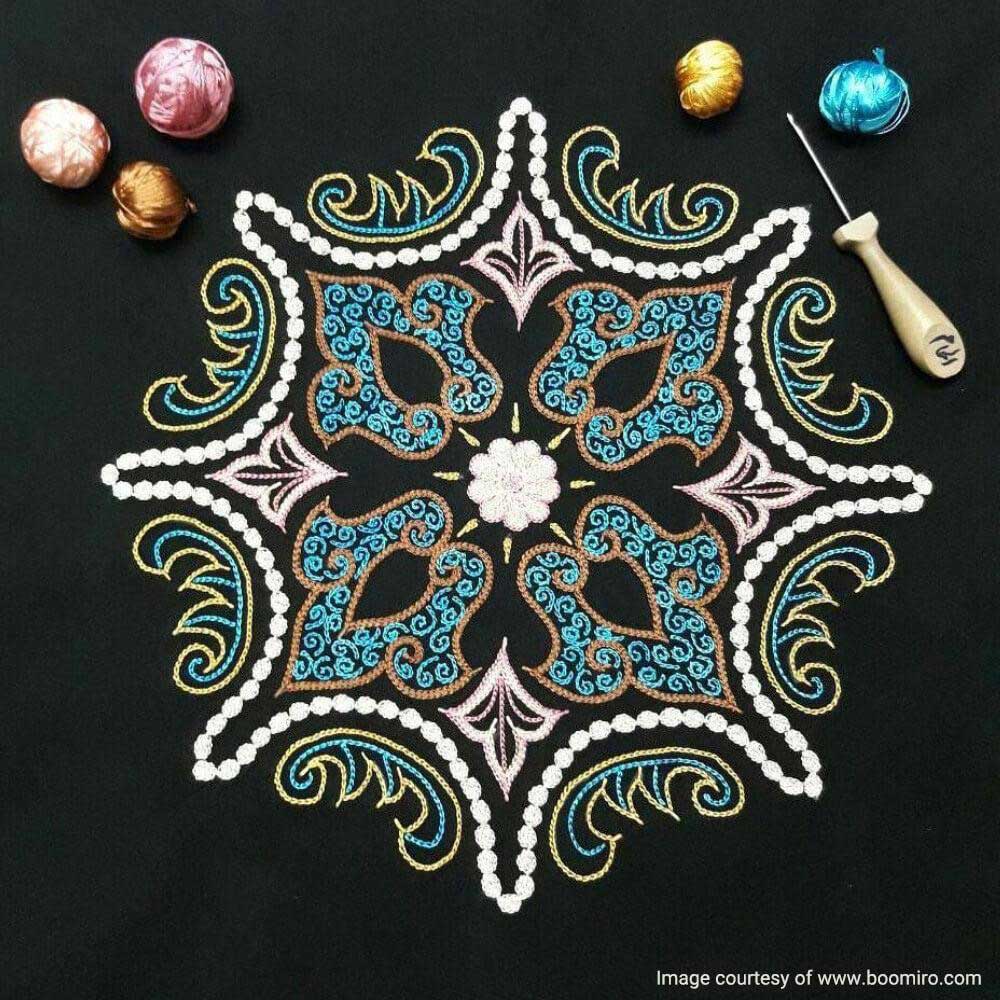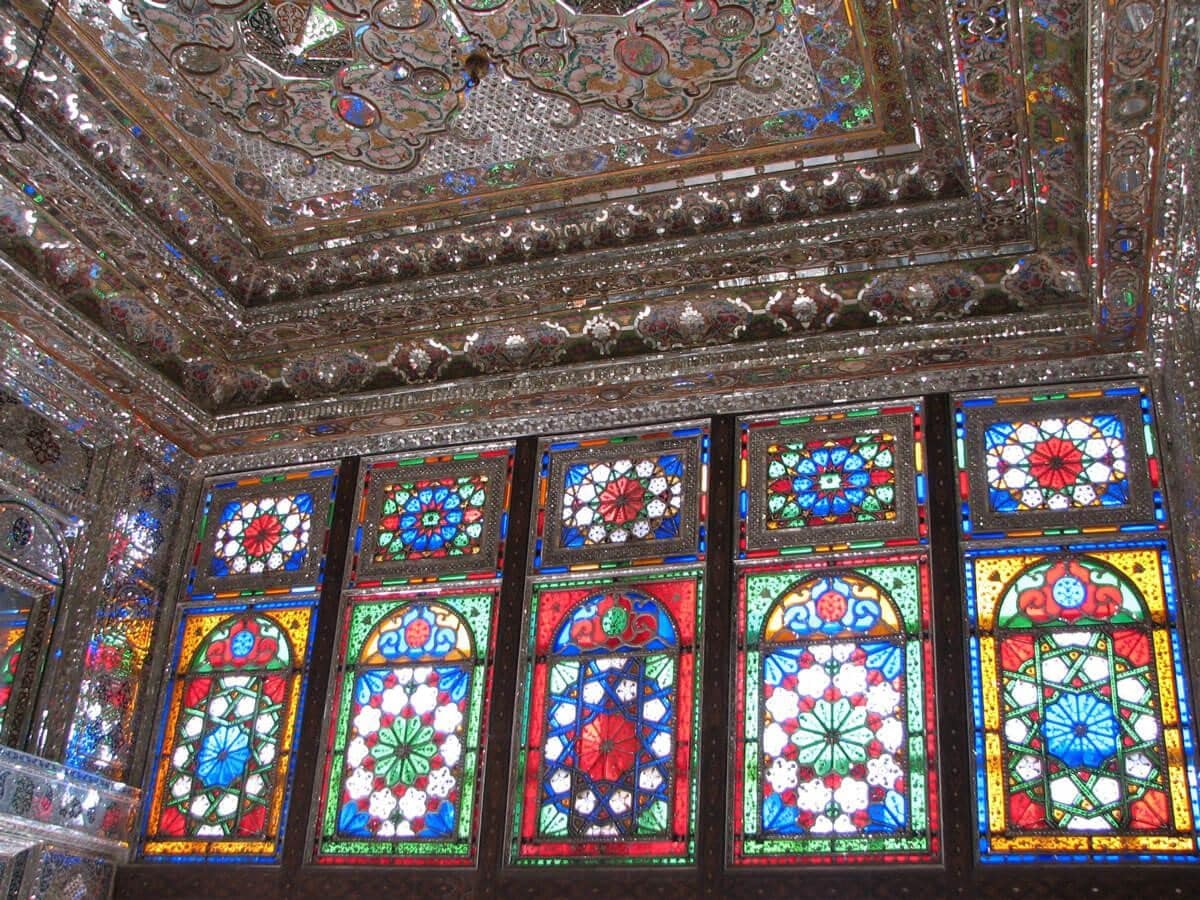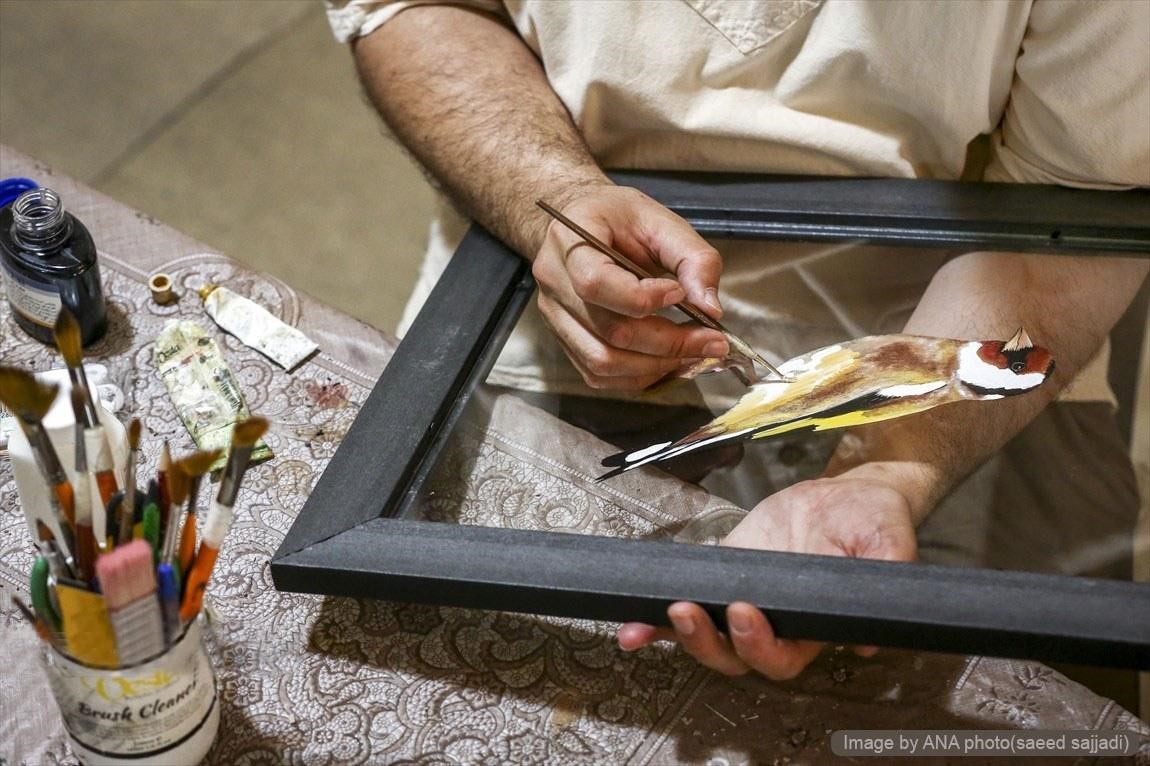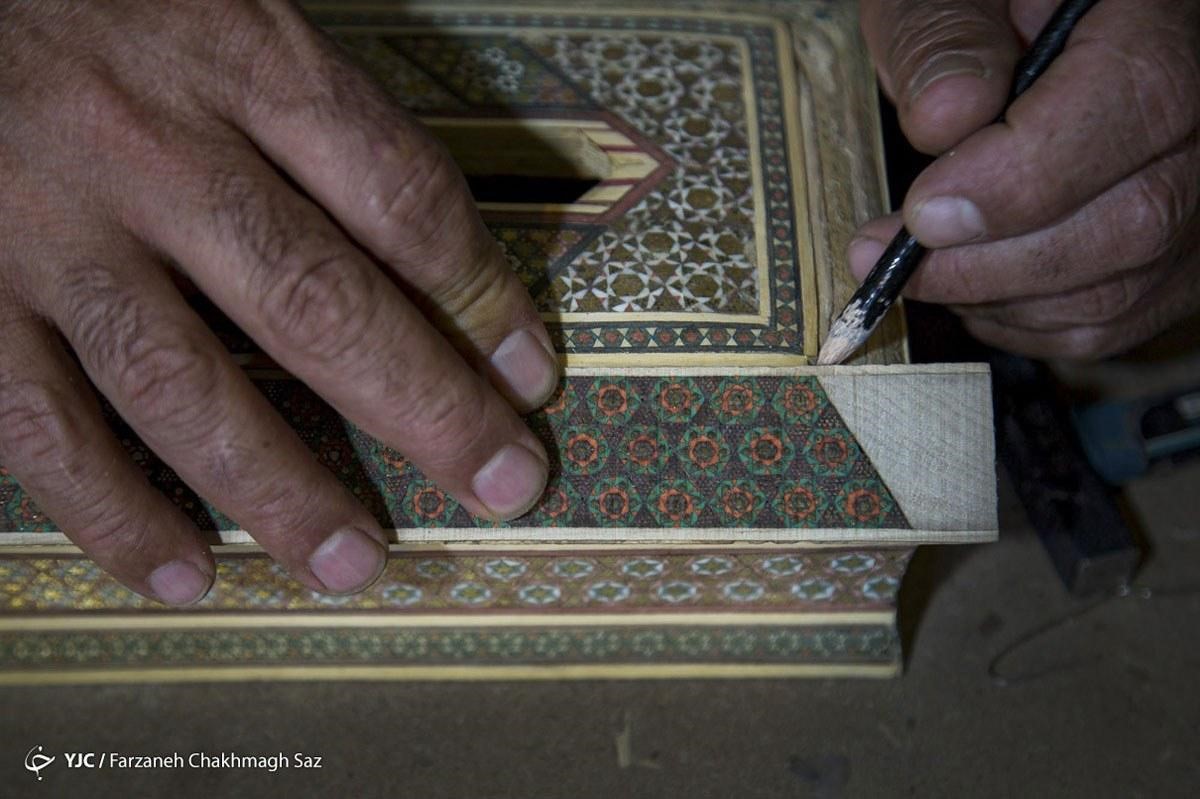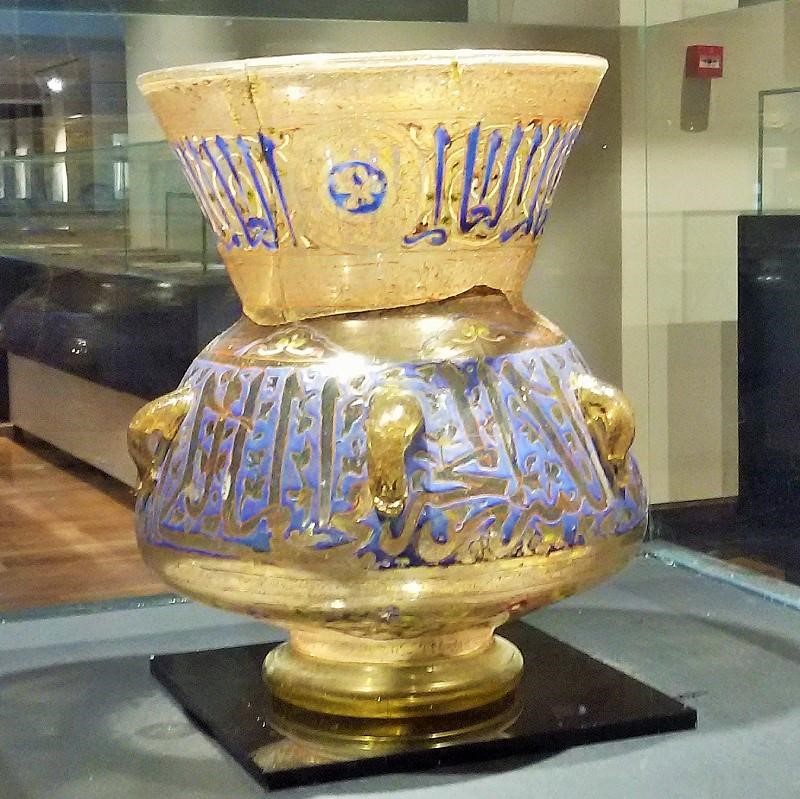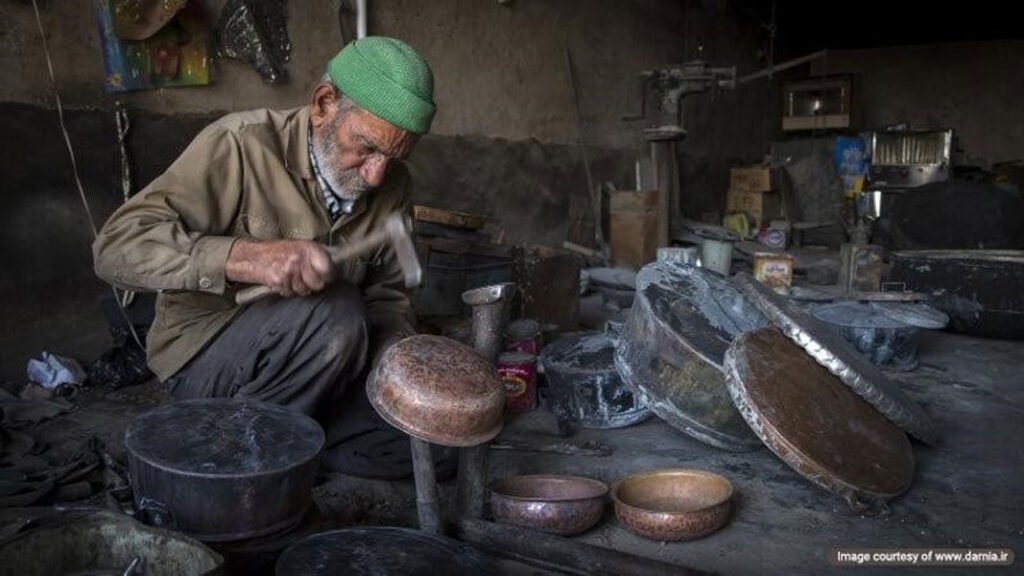
Cold forming in Iran has an extensive history. In Persian, crafting metal tools and dishware without a forge and using hammering is called Dawatgari or cold forming. Since the metals used in these handicrafts are usually silver or other precious metals, the artists in this field are known as Noghreh Kar (silversmiths).
Various objects are made in this traditional crafting method, so the title of “Dawatgari” in Iran Handicrafts discourse has been changed to Roygari (zinksmithing), Mesgari (coppersmithing), Zargari (goldsmithing), Varshosazi and Samovarsazi (Samovar craft). In this article, we are going to introduce the applications, tools, and crafting practices of this traditional Iranian handicraft.
What is Dawatgari (Traditional Cold Forming)?
The word “Dawat-gar” is a derivative word that is made from the word “Dawat” which is an inkwell with a holder for a pen brush and sharpening tools, and the suffix “Gar”. Currently, the Dawat is not a commonly used object since pen brushes are replaced by modern pens and fountain pens. Therefore the old word “Dawatgar” has been branched into Roygari (zinksmithing), Mesgari (coppersmithing), Zargari (goldsmithing), Varshosazi, and Samovarsazi (Samovar craft) as there are the tools created by cold forming nowadays.
Cold forming in Iran is a traditional metalwork practice categorized under Iranian handicrafts, which produces various metalwork objects. Among the common products made using cold forming are samovar, grill, and stove.
Among these, samovar making is one of the pinnacles of cold-forming art in Iran, which was first practiced as a separate branch by Iranian cold-forming artists in the 19th century.
How is Traditional Cold Forming Practiced in Iran?
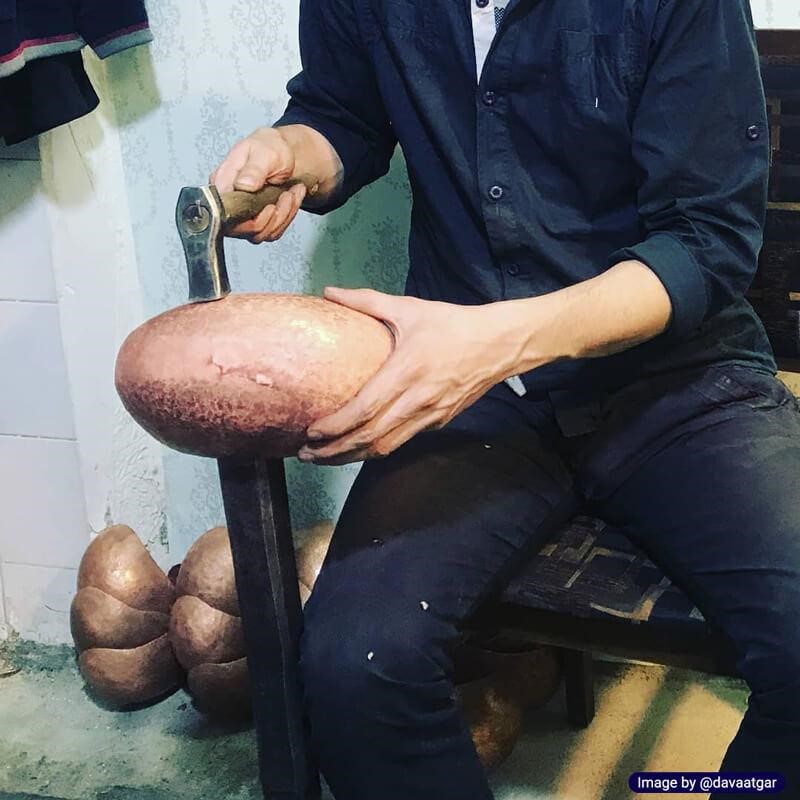
Crafting various objects using the art of cold forming in Iran starts with selecting the desired metal. Below we describe the steps of cold forming using silver metal:
- Silver metal in cold forming is in the shape of balls or small grains of different sizes and with 100-carat purity. Considering that 100-carat silver is very soft and malleable, it should be melted and mixed with copper metal. In this way, the purity grade of silver is reduced, making it suitable for cold-form silversmithing.
- The base grade for cold-forming silver is 92 in Shiraz and 84 in Isfahan. After the metal reaches the desired purity grade, it is pressed into a silver sheet using a machine called Navard (rolling pin). Depending on the desired dishware, this sheet is created in different sizes and shapes such as circles, rectangles, etc.
- Then, the desired sheet is shaped using a hammer and on an anvil (a metalsmithing tool used to hammer and shape objects). This cold-forming method is more common in Shiraz. In other cities such as Isfahan, dishes are not made in one piece.
- In the Shirazi cold-forming method, after shaping the metal, it is handed over to the engraving artist to be decorated with various patterns. The engraving process slightly reshapes the container. For this reason, after engraving, it is returned to the cold-forming artist to reshape the object into perfection. The cold-forming artist may add other parts such as a handle, rim, or base to the desired container using solder.
In general, there are three methods of cold forming, which are:
- One-piece or seamless cold forming style
- Multi-piece or soldered method
- Bending method
Normally, brass metal is utilized in crafting objects in the art of cold forming in Iran. However, they can use other alloys such as silver and nickel. In that case, handicraft artists are known as Warsawsaz.
Today, the samovar is the main object created using this traditional metalcrafting method. After that, grills and Tabeh (pans) were the most popular handicraft products created using cold forming in Iran. A Tabeh is a traditional cookware that is heated using charcoal.
Cold-forming artists sometimes make other metal objects such as saucers and trays. After the crafting process, they are sent to a master engraver to engrave decorative motifs on them. Inlaid silver and copper dishware are among the best examples of traditional engraving in Iran.
What are the Tools Used in Cold Forming in Iran?
Cold forming in Iran is practiced using various traditional tools, which are as follows:
- Hammers: heavy hammer, half-crescent flat hammer, wooden hammer, Sarkas hammer, single-bottom hammer.
- Anvil: include half-nail anvils, flat-bottomed anvils, and anvils known as Naykas.
- Crucible: it is a container for melting copper balls, placed in the furnace to melt the ingots.
- Metal caliper, all kinds of pliers, all kinds of normal and needle files, all kinds of scissors, gas torch, brush, rolling pin.
Learn More About Cold Forming Handicraft in Iran
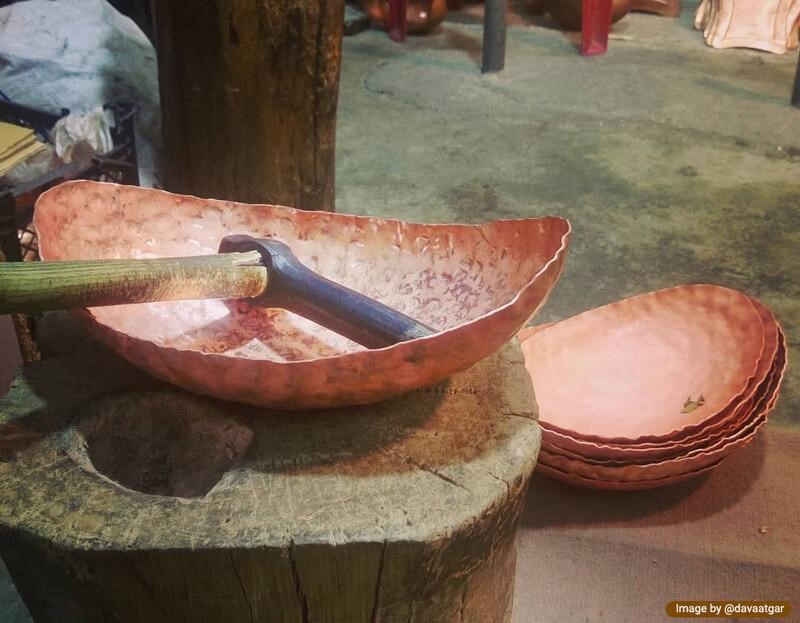
There are more steps in the process of making different metal dishware through the art of cold forming:
- Measuring with a caliper, cutting the sheet with scissors, heating the sheet, suspending the silver sheet in alum and water solution for whitening, and hammering.
Cold Forming Handicraft Products
One of the most important products of this handicraft art is samovar. This product entered Iran in the 19th century and was constantly upgraded by Iranian artisans.
Today, other products are also made by the art of cold forming, including coffee pots, grills, heaters, pans, trays, etc. Some cold-forming artists from Shiraz, who are known as Kalimi Dawatgar artists, also make spoons and forks.
It should be noted that cold-forming products can be used as a base to practice other arts such as engraving, etching, Minakari (enameling), gold blocking, etc. For this reason, this industry is included in supplementary industries.
Find the Best Cold Forming Handicraft Dishware in Shiraz and Isfahan
Destination Iran is proud to introduce Iranian handicrafts and invites you to learn more about the art of cold forming in Iran. If you are planning to travel to Iran on an Iran tour package, visit the cold-forming workshops in Iran, especially in the cities of Shiraz and Isfahan.






